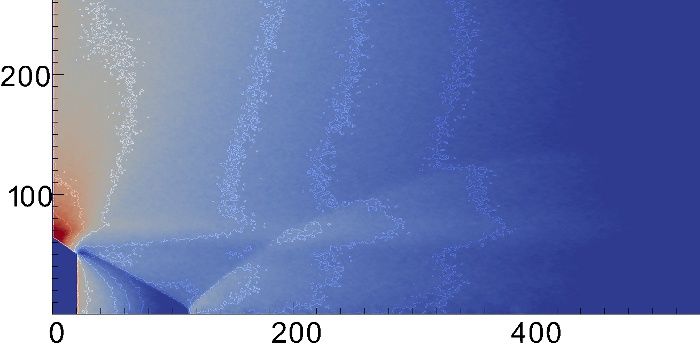Expansion into vacuum
Introduction
The expansion of gas into vacuum is another interesting application from a technical point of view. Expansion means that gas from a high pressure reservior enters a region with a much smaller pressure via some kind of nozzle. The density of the gas typically decreases by a few orders of magnitude while the gas propagates into the vacuum. Typical applications include for example satellite steering and outgasing of surfaces in vacuum machines or space. The influence of the nozzle geometry and the shape of the outgasing surface on the flow field is of interest. Also the interaction of multiple expanding streams can be studied.
Example
In collaboration with the Max-Planck Institute for Solar System Research (MPS) the expansion of a gas into a vacuum was studied. The geometry is axially symmetric (0 < r < 500 m, 0 < z < 1000 m). The gas is outgassing from a surface. The outgassing mass flux is a function of the radial distance. The center of the surface contains a region that is oriented perpendicular to the z-axis. The outgassing mass flux in this region is rather high. The central region is followed by a second region that oriented at some angle to the z-axis. The outgassing mass flux is smaller in that region. The second region is followed by a third region that is again perpendicular to the z-axis. The outgassing mass flux in that region is equal to the rate in the central region.
The image below shows the number density field above the surface. It can be seen that the streams originating from the three different surface regions interact and form a complicated pattern. The expansion of the central stream is hindered by the outer streams. A shock wave emerges.

This simulation contains about 126 million simulated molecules.